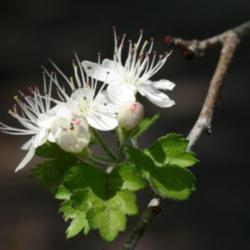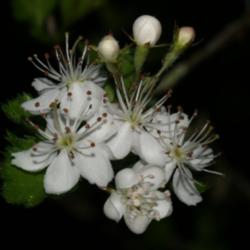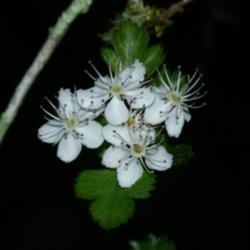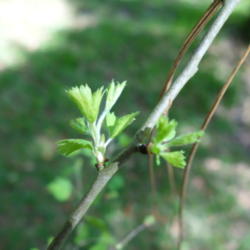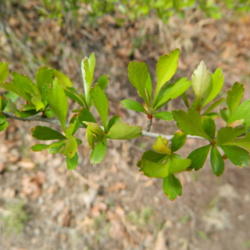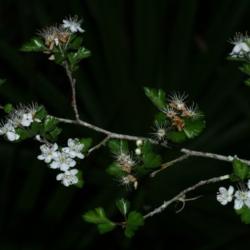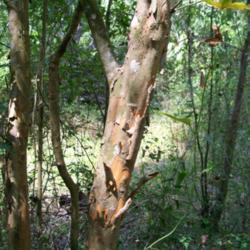| Plant Habit: | Tree |
| Life cycle: | Perennial |
| Sun Requirements: | Partial or Dappled Shade |
| Minimum cold hardiness: | Zone 4b -31.7 °C (-25 °F) to -28.9 °C (-20 °F) |
| Maximum recommended zone: | Zone 11 |
| Plant Height: | to 25 feet |
| Plant Spread: | to 15 feet |
| Leaves: | Deciduous Other: White Tailed deer like to feed on the leaves |
| Fruit: | Showy Edible to birds |
| Flowers: | Showy |
| Flower Color: | White Other: with 10 (usually) red stamens |
| Bloom Size: | Under 1" |
| Flower Time: | Spring |
| Underground structures: | Taproot |
| Suitable Locations: | Xeriscapic Bog gardening |
| Uses: | Flowering Tree Medicinal Herb Will Naturalize |
| Edible Parts: | Fruit |
| Wildlife Attractant: | Bees Birds Butterflies Hummingbirds |
| Propagation: Seeds: | Stratify seeds: 100 to 300 days Scarify seeds: 120 day warm, moist treatment &/or 5 hours in concentrated sulfuric acid |
| Containers: | Not suitable for containers |
| Miscellaneous: | With thorns/spines/prickles/teeth |
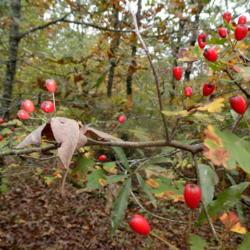
![Date: c. 1892
illustration [as C. apiifolia] by C. E. Faxon from Sargent's 'Sil
Date: c. 1892
illustration [as C. apiifolia] by C. E. Faxon from Sargent's 'Sil](/pics/2021-02-23/scvirginia/86d534-250.jpg)
